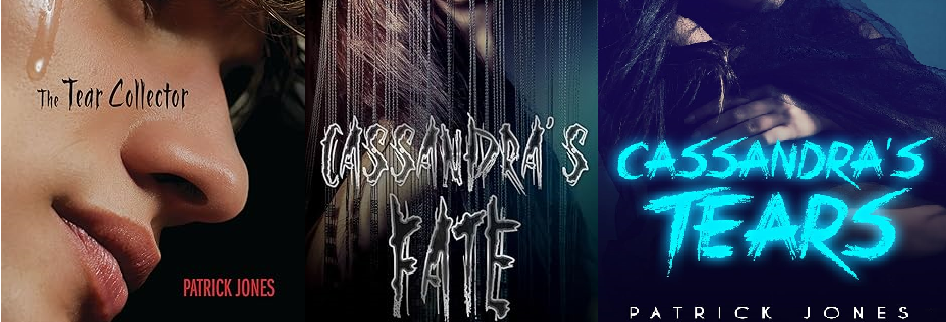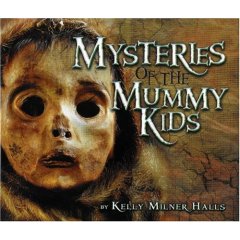Connectingya.com presents..
RAWING with Kelly Milner Halls answering the five questions of doom
1. Start by telling us a little bit about your background in the youth book world. How did you get involved in writing for kids and what are some of the books you are most proud of?
After falling in love with journalism in high school, I studied it in college. I thought I’d write for adults, but lacked the killer instinct. After all, when you write about a bank robber, his kids have to live with the consequences. Then I had two kids of my own and realized, if I write for kids, I can be more selective in topics – have a little more fun. So for more than a decade, I wrote short nonfiction for children’s magazines and newspaper sections. After more than a 1,000 bylines, I tackled book length nonfiction for young readers and have seen more than 30 books published since that transition. Writing for kids was my destiny.
2. Why do you think non-fiction has such boy appeal, in particular the types of things you write about such as aliens, ghosts, and monsters (oh my)?
When I was a kid, I was essentially my father’s boy. My sister had already claimed the “girl” spot and I was far more athletic and adventurous than she was. So I grew up playing baseball and building forts; exploring the woods and catching critters. I grew up a girl in a boy’s world. My guy friends and I wanted to know our natural world – the answers to endless, ever-burning questions. Unfortunately, those answers are not always easy to find, especially as a kid. When I grew up, I decided to search for the evidence I’d missed as a kid. Possibilities and wonder are what keep boys interested. Discovery is impossible to resist in that world, and that’s the world in which I feel most at home.
3. It seems to me non-fiction for youth has really changed in the past ten years from focusing less on “report books” full of text to dramatic storytelling chock full of photos. You’ve been doing this for a few years (anyone who has out of print books has), what changes have you seen in the non-fiction genre? Some people believe that in the wiki word that non-fiction isn’t necessary, while other stress with common core, good non-fiction is more important. Your stance?
When I started writing book length nonfiction for young readers there were two choices – text heavy overviews of library standard topics and photo heavy fact books that touch upon topics, but only lightly. Neither felt complete to me. I’d spend a decade writing for magazines – text, images, sidebars. I wanted to bring that to nonfiction books. I wanted to redefine success for reluctant readers – especially boys — by drawing them in in every possible way. So I took what I’d learned in magazines and applied it to nonfiction books. I believe that hybrid approach has made my books popular with readers who struggle with more traditional approaches. That’s a major change that has now endured and grown.
As for the importance of nonfiction, I’d say it’s crucial, especially to readers who haven’t discovered the magic of fiction yet. Some kids – and I was one of them — resist things that “aren’t true.” If they’re not true, what’s the point? Nonfiction helps those kids develop the courage and confidence to read until the magic takes hold. For me, that happened when my 3rd grade teacher, Miss Grayson read CHARLOTTE’S WEB aloud. Until I heard the story in her passionate voice, until I felt the truth behind Fern and Wilbur and his beloved spider friend, I didn’t understand that facts and feelings were woven into fiction. Once shown the light, my devotion to nonfiction had prepared me well for the challenge of BLACK BEAUTY and THE YEARLING.
To take that full circle, reading fiction always, without exception, lead me back to nonfiction where I could find out if those fictional scenarios could ever unfold in real life. My relationship with reading grew wider, thanks to my love for both.
4.  Your web page talks a great deal, and shows even more with photos, school visits. Tell me a little bit about how those visits inform your books, but also why teachers should invite authors into their classrooms.
Your web page talks a great deal, and shows even more with photos, school visits. Tell me a little bit about how those visits inform your books, but also why teachers should invite authors into their classrooms.
We live in the information age, literally. Young readers are engulfed by information – some of it reliable, some of it not reliable. Learning how to tell the difference between credible and questionable sources is crucial to the education and personal success of every student in our school systems. But getting them excited about that determination isn’t easy. Nonfiction and nonfiction writers can be dry in their approach to research and discovery. Kids resist all things they perceive to be dull. Because my topics are of high interest, and because some of my topics can’t be proven or disproven, credibility takes on enormous importance. And because kids are endlessly curious about my topics – just as I am – they can see the need for critical thinking skills. If we can say, conclusively that something is real or unreal, what can we discern? What will we need to take a theory from questions to real answers?
My work as a writer and a presenter revolves around those subjects, so I believe the kids and the educators get a lot out of what is shared. I also know the kids offer me feedback on new topics I might like to explore. And while that’s not why I do school visits, it is incredibly helpful.
The pictures – many, many of them – are posted on my website to celebrate the relationships I’ve built with the educators and students I’ve been lucky enough to meet. They offer me so much love and affection at the close of my school visit days, offering a little website appreciation in return seems only right. Love is a two way street.
Most writers have books in three stages, like this blog, RAW: Reviewed, Adjusted /edited, and Writing/ written. What are your three books each of those stages?
REVIEWED: GHOSTLY EVIDENCE is my latest book for Millbrook – a paranormal investigation that took me four years to research and write. I wrote it because “true” ghost stories were leaving kids terrified. I suspected the truth in movies, television shows and books was, at best, subjective. And I believed with only one side of the experience on display, kids had no choice but to be afraid. So I set out to do the research myself. I visited haunted houses, prisons, ships, graveyards, orphanages and other locations with paranormal experts to see if the terrors represented in existing texts were reasonable or exaggerated, at least based on whatever I discovered on my own. I do not discount the “evil” spirits some people insist they’ve met. I wasn’t there, I can’t confirm or deny. All I can do is share what happened to me in four years of investigation. And not once did I meet a demon. Not once was I fearful. Did I unearth evidence I could not explain? I did. But it wasn’t a dangerous experience for me. It was interesting – even fun. My book simply offers an alternative to the super charged books meant to scare. My book offers another point of view.
ADJUSTED:EDITED: Before he took his job at Dutton, Andrew Karre hired me to write my very first fiction books for Lerner’s Darby Creek imprint. Two of the three middle grade novels are complete – written and edited. The third is in process. All three will be released in hardcover, paperback and e-book in the Fall of 2015. They are fictional animal rescue stories inspired by true newspaper reports.
WRITING/WRITTEN: I am researching four other nonfiction books. I want to write a comprehensive history of video games for young readers. It doesn’t exist and it should, but I’ve yet to convince a publisher I’m right about that. I will not give up until I do. I have been a gamer since my mother took me to my first arcade as a small child – she later brought home the original Atari. And I’ve never been without video games since.
I am researching a book on tardigrades – water bears. They may be the most hearty living creature on earth – something extra surprising considering they are the size of a poppy seed. They can survive extremes in heat and cold, the absence of water, even life in space without air, so they are begging me to tell their story.
I am working with another author to create a book on the history of ventriloquism. And I want to write a book about ghost fishing – the acres of fishing equipment abandoned in our oceans that captures and kills marine life without exception – and the scientists devoted to reversing the damage, one scrap at a time.
And I hope to write IN SEARCH OF SEA MONSTERS, a sequel to IN SEARCH OF SASQUATCH, and THE CRYPTID FIELD GUIDE AND ACTIVITY BOOK, a new book on cryptozoology for my TALES OF THE CRYPTID fans.
Last but not least, I will write my first YA novel this coming year. So my dance card is definitely filled.




